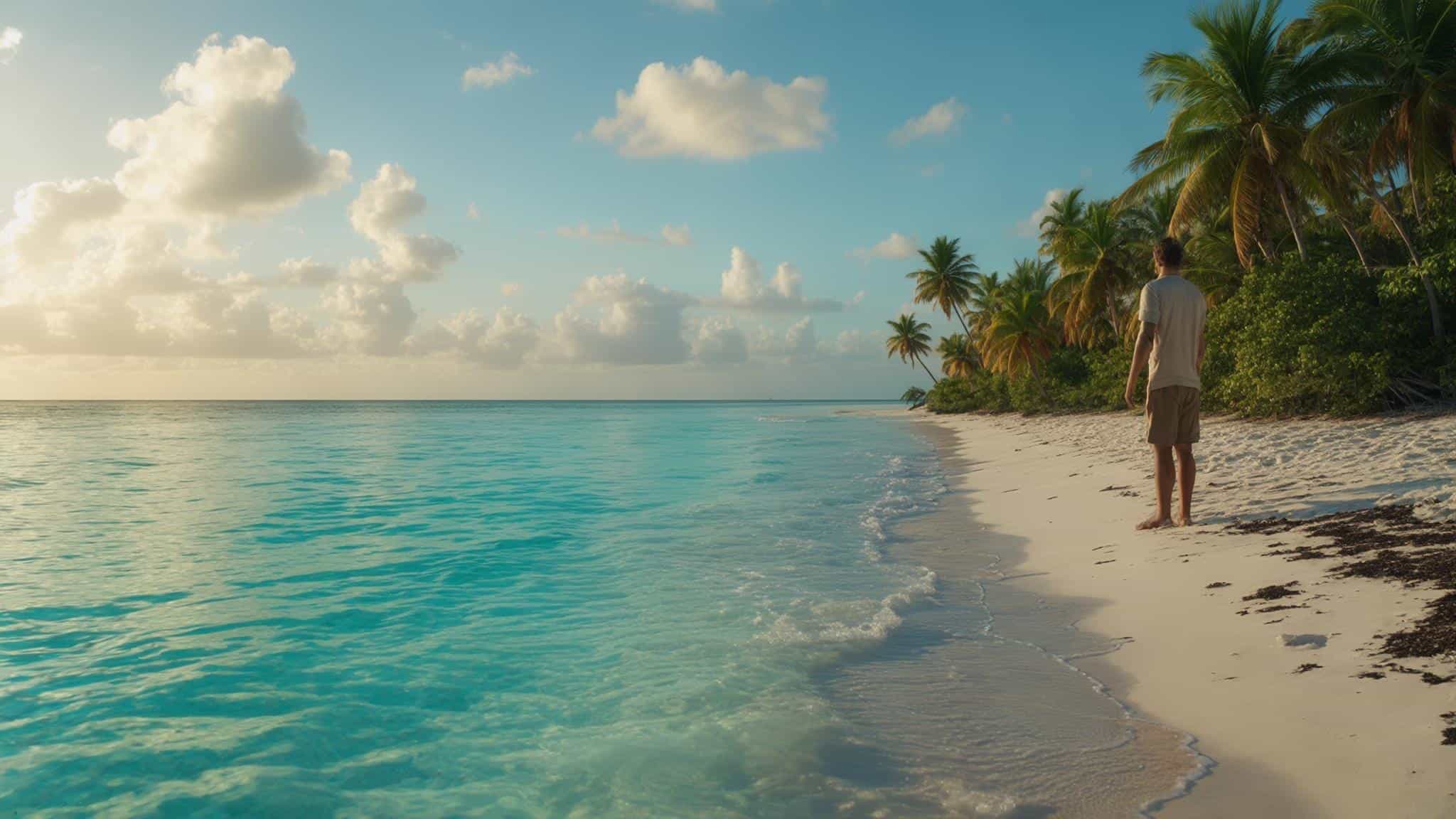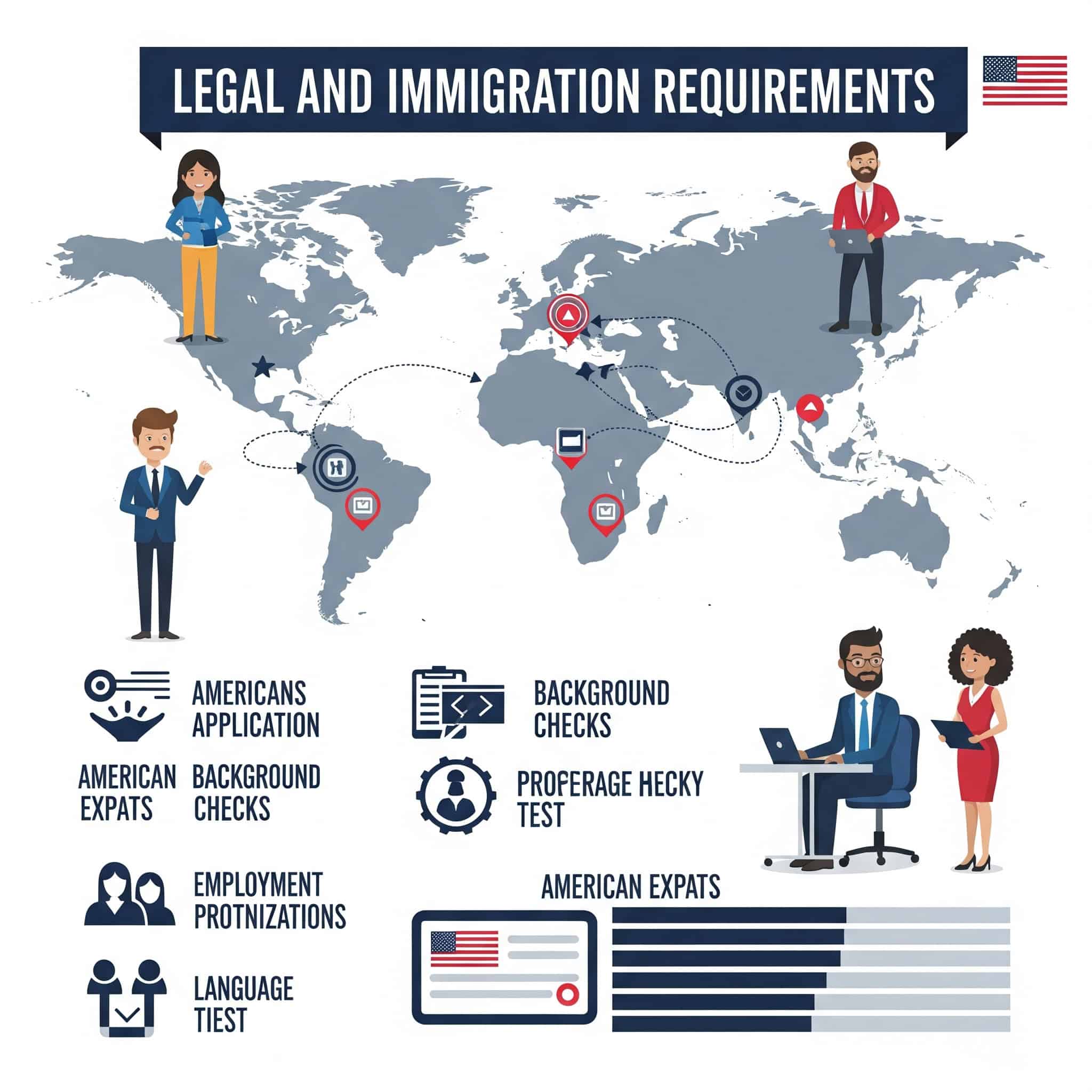Moving to Belize from the US: 25 Essential Considerations for a Smooth Transition
Table of Contents
Legal and Immigration Requirements
Financial Considerations
Lifestyle and Adaptation
Practical Considerations
Long-term Planning
How Jiffy Junk Can Help With Your International Move
Final Thoughts
Legal and Immigration Requirements
1. Navigating Visa and Residency Options
Thinking about moving to Belize from the US? The Qualified Retired Persons (QRP) program is your golden ticket if you’re 45 or older. I’ve researched this extensively, and it’s definitely the most popular path for Americans. You’ll need to show you have at least $2,000 in monthly income from outside Belize. The tax benefits are amazing, but here’s the catch – you can’t work in Belize under this program, so make sure your finances are solid before packing your bags.
The QRP application isn’t a walk in the park. You’ll need income proof, background checks, and medical exams, with processing typically taking 3-6 months. One nice flexibility is that you only need to spend 30 consecutive days in Belize each year to maintain your status – no maximum stay requirements to worry about!
Visa Type | Age Requirement | Income Requirement | Work Permitted | Key Benefits |
|---|---|---|---|---|
QRP Program | 45+ | $2,000/month | No | Import tax exemptions, income tax exemptions |
Tourist Visa | None | None | No | 30-day stay, renewable up to 6 months |
Work Permit | 18+ | N/A | Yes | Employment authorization for 1 year |
Student Visa | None | Proof of enrollment | No | Duration of study program |
2. Securing Permanent Residency Status
After living in Belize continuously for a year, you can apply for permanent residency. I won’t sugarcoat it – this process involves a lot of paperwork. You’ll need police clearance documents, medical exams, and proof that you’re financially stable. The bureaucracy can be overwhelming, which is why many expats hire local attorneys to help navigate the system.
Processing times typically run between 12-18 months, and the application fee is around $2,000 USD. That doesn’t include attorney fees, which can add another $1,000-3,000 to your budget. One crucial detail to remember: during the application processing period, you can’t leave Belize for more than 14 consecutive days. This restriction requires careful planning for any international travel you might need to do.
3. Understanding Citizenship Requirements
Want to go all the way and become a Belizean citizen? You’ll need to maintain permanent residency for five years first. The application process evaluates your knowledge of Belize through an exam covering history, government structure, and cultural knowledge. They’ll also check your character references and your intention to keep living in the country.
The good news for those looking to move to Belize is that the country recognizes dual citizenship. This means you can keep your American passport while gaining all the benefits of Belizean citizenship, including unrestricted work rights, voting privileges, and the ability to own certain restricted lands that non-citizens can’t access.
4. Property Ownership Regulations for Foreigners
One of the things I love about Belize is how straightforward property ownership is for foreigners. You’ll have rights equal to citizens, making real estate investment relatively simple. However, if you’re eyeing a large piece of land exceeding 10 acres, you’ll need special government approval.
Property transfers come with a stamp duty of about 5% of the purchase price, plus legal fees typically ranging from 2-3%. The General Registry in Belmopan maintains land records, but some rural areas have incomplete documentation. This is why I strongly recommend title insurance for all property purchases – land disputes do happen, and you’ll want that protection for your investment.
Before purchasing property in Belize, you might need to declutter your current home to prepare for your international move.
5. Managing Tax Implications
Living in Belize offers significant tax advantages that make my accountant friends jealous. There’s no capital gains tax, no inheritance tax, and no foreign income tax. However, as a US citizen, you must continue filing US tax returns regardless of where you live – Uncle Sam doesn’t let go easily!
Working with a tax professional who specializes in expatriate tax law is absolutely essential. The US-Belize tax treaty prevents double taxation, but you’ll need to file IRS Form 2555 (Foreign Earned Income Exclusion) to exempt qualifying income. Don’t forget about FBAR filing requirements either – you must report foreign bank accounts exceeding $10,000 at any point during the tax year, with substantial penalties for non-compliance.
John and Mary, a retired couple from Florida, successfully navigated the QRP program by working with a Belizean attorney who specialized in expatriate relocations. They prepared their application package six months before their planned move, including notarized bank statements showing their retirement income, FBI background checks, and medical clearances from their US doctor. Their attorney submitted their paperwork to the Belizean Tourism Board and arranged their required interview. Within four months, they received QRP approval, allowing them to import their household goods and vehicle duty-free. The couple maintains their Florida driver’s licenses and voter registrations while enjoying their tax advantages in Belize, filing their US taxes each year with the Foreign Earned Income Exclusion.
Financial Considerations
6. Setting Up Banking and Currency Exchange
When moving to Belize, you’ll find that opening a local bank account requires residency documentation and involves more paperwork than you’re used to in the US. I’ve talked with many expats living in Belize who maintain accounts in both countries to avoid the hassle of frequent international transfers.
The Belizean dollar maintains a fixed 2:1 exchange rate with the US dollar, which makes financial planning much easier. Even better, US currency is widely accepted throughout the country, so you won’t always need to exchange money. The primary financial institutions serving expatriates are Atlantic Bank, Belize Bank, and Scotia Bank, each with varying requirements for minimum balances and monthly fees.
ATM withdrawal limits typically range from $500-1,000 BZD daily, with fees of $2-5 USD per transaction when using US cards. These fees can add up quickly, so plan your withdrawals strategically to minimize extra costs.
7. Breaking Down the Cost of Living
Living in Belize can be significantly more affordable than the US, depending on your lifestyle choices and location. Monthly expenses for a couple typically range from $1,500-$3,000. Tourist destinations like Ambergris Caye command premium prices, while inland locations offer much better value.
Utility costs vary seasonally, with electricity averaging $100-300 monthly (higher if you run air conditioning constantly), water at $30-50, and internet services at $50-100. I’ve found that grocery shopping requires a strategic approach – imported goods carry substantial premiums due to high import duties, sometimes 20-30% higher than US prices. However, local produce costs 30-50% less than in the States, so adapting your diet to local options can significantly reduce your food budget.
Expense Category | Ambergris Caye | Placencia | Cayo District | Corozal |
|---|---|---|---|---|
Monthly Rent (2BR) | $1,000-1,500 | $800-1,200 | $500-800 | $400-700 |
Utilities | $200-350 | $180-300 | $150-250 | $150-250 |
Groceries | $500-700 | $450-650 | $350-500 | $350-500 |
Dining Out (2 people) | $40-60 | $30-50 | $20-40 | $20-35 |
Healthcare Insurance | $150-300 | $150-300 | $150-300 | $150-300 |
Transportation | $200-300 | $150-250 | $150-250 | $150-250 |
Total Monthly | $2,090-3,210 | $1,760-2,750 | $1,320-2,140 | $1,220-2,035 |
8. Exploring Real Estate Investment Options
Property prices in Belize offer something for every budget, from $50,000 for simple inland homes to $300,000+ for beachfront properties. If you’re considering an investment property, rental yields average 5-8% annually, which can make real estate quite profitable.
Construction costs average $80-150 per square foot depending on materials and location, with coastal construction running 20-30% higher than inland building. One pleasant surprise for those who move to Belize is the property tax situation – rates remain remarkably low at approximately 1-1.5% of the assessed value, which is often significantly below market value.
The real estate market lacks the regulatory oversight found in the US, so working with reputable agents and conducting thorough due diligence is absolutely essential before purchasing. I’ve heard too many horror stories of people rushing into purchases only to discover title issues later.
9. Planning for Healthcare Costs
Healthcare is a major consideration when retiring in Belize. Private health insurance costs between $100-300 monthly, varying based on age and coverage levels. The good news is that out-of-pocket medical expenses run substantially lower than in the US, with typical doctor visits costing just $25-50.
Major medical procedures cost approximately 30-50% of US prices, but facilities for complex treatments are limited. This is why many expats maintain international health insurance policies with evacuation coverage, which typically cost $200-500 monthly for comprehensive coverage. These prices increase significantly after age 65.
One crucial detail that catches many retirees by surprise: Medicare doesn’t provide coverage in Belize. You’ll need to budget for supplemental international health insurance as part of your retirement planning.
10. Accessing Retirement Funds Abroad
When living in Belize, you can still receive your Social Security benefits through direct deposit to US accounts. Distributions from 401(k) accounts and IRAs remain accessible but continue to follow normal US tax regulations. I recommend maintaining a US bank account for receiving these funds, then transferring money to Belize as needed.
The US Social Security Administration requires an annual proof-of-life verification for beneficiaries living abroad, which can be completed at the US Embassy in Belize City. This is a simple process but essential to maintain your benefits.
Wire transfer fees between US and Belizean banks typically range from $25-50 per transaction, with additional currency conversion costs of 1-3%. These fees can add up, so it’s worth planning larger, less frequent transfers rather than multiple small ones. Some expats use credit cards for major purchases to avoid these transfer costs altogether.
Lifestyle and Adaptation
11. Selecting Suitable Housing Options
When moving to Belize, housing choices vary dramatically by region. Beachfront condos on Ambergris Caye start around $200,000, while jungle retreats near San Ignacio go for $100,000-200,000. Established expatriate communities like Placencia offer homes ranging from $150,000-400,000.
Construction standards differ significantly from US norms, making professional inspections crucial before finalizing any purchase. Tropical building considerations include hurricane-resistant construction, proper ventilation systems, and elevated foundations in flood-prone areas. I’ve seen too many newcomers skip this step only to face costly repairs later.
Rental properties typically require first and last month’s rent plus a security deposit, with long-term leases offering 20-30% discounts compared to vacation rental rates. Many expats choose to rent for 6-12 months before buying, which I think is a smart approach to test different areas before committing.
Robert, a retired engineer from Chicago, purchased a 2-bedroom home in Placencia for $175,000 after renting in the area for six months. Before buying, he hired a local building inspector who identified several issues typical in Belizean construction: inadequate roof hurricane straps, electrical wiring that didn’t meet US code standards, and plumbing that lacked proper venting. Robert negotiated a $15,000 price reduction and spent $20,000 on upgrades, including installing a whole-house water filtration system, reinforcing the roof structure, rewiring to US standards, and adding screened porches to reduce his need for air conditioning. His methodical approach to upgrading the property not only created a comfortable living space but also increased the home’s resale value by approximately 20% within three years.
12. Navigating Transportation Infrastructure
Moving to Belize means adjusting your transportation expectations. Public transportation options are limited, leading many expatriates to purchase vehicles despite import taxes that can add 50-100% to vehicle costs. These import duties are calculated based on engine size, vehicle age, and value, with rates ranging from 60-120% for personal vehicles.
Roads outside major towns are frequently unpaved, making four-wheel drive vehicles highly recommended, particularly during the rainy season when conditions deteriorate quickly. I’ve been stuck on muddy roads more than once and can attest that a capable vehicle is worth the investment!
For those who prefer to avoid driving altogether, domestic flights between major destinations cost $70-150 one-way, offering significant time savings compared to ground transportation on the country’s limited highway system. Water taxis are another popular option for coastal travel, particularly between Belize City and the cayes.
13. Managing Internet and Telecommunications
Internet service is available in most populated areas of Belize, with speeds typically ranging from 5-30 Mbps. Monthly costs average $50-100 depending on speed and reliability. If you’re planning to work remotely while living in Belize, you’ll want to research this carefully for your specific location.
Primary internet providers include BTL (Belize Telemedia Limited) and Smart, with fiber optic service increasingly available in tourist areas and major towns. Service quality can become intermittent during storms, and those living in remote areas often opt for satellite internet solutions despite their higher cost.
Mobile data plans cost approximately $15-30 for 5-10GB, with coverage strongest along coastal areas and major highways but spotty in rural regions. I keep both a local SIM card and my US phone plan (with international roaming) for backup connectivity when traveling around the country.
14. Joining Established Expatriate Communities
Popular expatriate locations in Belize include Ambergris Caye with its beach lifestyle, Placencia offering relaxed coastal living, Corozal providing affordable living near the Mexican border, and the Cayo District known for its rural, self-sufficient lifestyle. Each community features different amenities, cost structures, and social opportunities.
Ambergris Caye hosts approximately 2,000 expatriates (primarily from the US and Canada), with organized groups meeting weekly for social activities. The expat life in Belize can be as social or as private as you prefer – there are plenty of opportunities to connect with like-minded individuals if that’s what you’re looking for.
The Cayo District attracts self-sufficiency-minded expatriates with its agricultural opportunities, with land suitable for small-scale farming available from $2,000-5,000 per acre. Many expats in this region grow their own food and embrace a more independent lifestyle away from tourist areas.
15. Achieving Cultural Integration
Belize boasts remarkable cultural diversity with Creole, Mestizo, Maya, Garifuna, and other populations contributing to a rich social tapestry. While English serves as the official language, Spanish and Creole are widely spoken in many regions.
Cultural festivals occur throughout the year, with September celebrations (Independence Day) and November’s Garifuna Settlement Day being particularly significant for community integration. I’ve found that participating in these events is not only fun but also helps build connections with local residents.
When moving to Belize, demonstrating respect for local customs goes a long way toward being accepted in your new community. Local community organizations often welcome expatriate volunteers, providing natural opportunities for cultural exchange and relationship building. Some of my most meaningful experiences have come from volunteering at local schools and conservation projects.
Practical Considerations
16. Effectively Navigating the Healthcare System
Belize maintains both public and private healthcare facilities, with major hospitals concentrated in Belize City and smaller clinics distributed throughout the country. Belize Medical Associates and Belize Healthcare Partners in Belize City represent the country’s premier private medical facilities, offering services comparable to small US community hospitals.
Serious medical conditions frequently require evacuation to Mexico or the United States for treatment. This is why establishing relationships with healthcare providers before emergency situations arise proves invaluable when living in Belize. I recommend scheduling a “get to know you” visit with a local doctor shortly after arrival.
Common tropical diseases include dengue fever, Zika virus, and intestinal parasites, requiring preventative measures and prompt treatment when symptoms appear. Mosquito protection isn’t just about comfort – it’s an important health precaution in this climate.
Health Concern | Prevention Measures | Treatment Options | Estimated Cost |
|---|---|---|---|
Dengue Fever | Mosquito repellent, screened windows, eliminating standing water | Supportive care, hydration, pain management | $300-800 |
Intestinal Parasites | Filtered water, thoroughly cooked food, hand hygiene | Prescription antiparasitic medications | $50-150 |
Heat Exhaustion | Hydration, limiting midday sun exposure, proper ventilation | IV fluids, electrolyte replacement, cooling | $200-500 |
Minor Injuries | Proper footwear, home first aid kit | Outpatient clinic services | $25-100 |
Chronic Condition Management | Regular medication supply, preventative care | Specialist consultations, medication management | $100-300/month |
17. Adapting to the Tropical Climate
Temperatures in Belize average 75-85°F year-round with humidity levels consistently between 70-80%. The rainy season extends from May through November, with hurricane risk peaking from August through October. This consistent warmth is wonderful for escaping cold northern winters, but it does require some lifestyle adjustments.
Coastal areas experience steady trade winds providing natural cooling, while inland regions can feel significantly hotter due to reduced air movement. Home design should account for heat, humidity, and potential flooding or wind damage to ensure comfort and safety. Features like covered outdoor living spaces, ceiling fans, and proper window placement for cross-ventilation make a huge difference in daily comfort.
Hurricane preparedness includes securing important documents, maintaining emergency supplies for at least two weeks, and developing evacuation plans to inland locations or neighboring countries. I keep a “go bag” ready during hurricane season with essential documents, medications, and emergency cash.
Many expats find that properly disposing of old appliances before moving to Belize is more practical than shipping inefficient air conditioners and refrigerators that may struggle in the tropical climate.
18. Implementing Safety and Security Measures
Is Belize safe to live? Crime rates vary significantly by region, with Belize City experiencing higher rates than other areas. Property crime occurs more frequently than violent crime against expatriates, and taking basic security measures goes a long way toward protecting yourself and your belongings.
Home security systems with monitoring services are available in major towns, costing $500-1,000 for installation plus monthly monitoring fees of $30-50. Neighborhood watch programs exist in many expatriate communities, providing both security benefits and social connections with neighbors.
Basic security measures such as secure doors, windows, and adequate lighting are recommended, while gated communities offer additional layers of security for those concerned about safety. I’ve found that building relationships with neighbors creates an informal security network that’s just as valuable as physical deterrents.
Lisa and David moved from Seattle to a home near Hopkins Village in Belize. To address security concerns, they implemented a layered approach rather than relying solely on high-tech solutions that might be difficult to maintain in Belize. They installed solid hardwood doors with deadbolts, window bars with decorative designs that complemented their home’s aesthetic, motion-sensor lighting around the property perimeter, and a safe bolted to their concrete floor for valuables and important documents. Most importantly, they built relationships with their Belizean neighbors by participating in community events, hiring local workers for home maintenance, and contributing to local school fundraisers. When they travel, their neighbors keep an eye on their property and collect any deliveries. This combination of physical security measures and community integration has provided them with both safety and peace of mind without the ongoing expense of a monitored security system.
19. Understanding Pet Relocation Requirements
Moving to Belize with pets requires advance planning. You’ll need veterinary health certificates, rabies vaccination documentation, and import permits from the Belize Agricultural Health Authority. Pet import permits cost approximately $25-50 and must be obtained at least two weeks before arrival, with additional veterinary inspection fees upon entry.
The tropical climate presents unique challenges for pet health, including increased risk of parasites and heat-related issues that require preventative care and monitoring. Heartworm, tick-borne diseases, and intestinal parasites pose significant health risks, requiring year-round preventative medications costing $30-50 monthly.
I brought my dog with me when I moved, and while the paperwork was a bit tedious, having her with me made the transition so much easier. Just be prepared for the ongoing costs of keeping pets healthy in a tropical environment – it’s definitely more expensive than in the US.
20. Managing Shipping and Moving Logistics
Shipping household goods to Belize typically costs between $5,000-15,000 for a container, with customs duties adding 20-45% to the value of imported items. Shipping transit times average 2-3 weeks from US ports, with an additional 1-2 weeks for customs clearance upon arrival in Belize.
Many expatriates choose to sell most possessions and purchase locally to avoid these substantial shipping costs and duties, simplifying the relocation process. I took this approach and found it liberating to start fresh with furniture and household items suited to the tropical environment.
Duty exemptions exist for returning Belizeans and certain qualified residents, but most expatriates face full import duties on household goods. This is another reason why the QRP program is popular – it includes duty exemptions on household goods and vehicles.
Before shipping your belongings to Belize, consider a thorough decluttering guide to help determine what’s worth taking and what should be sold or donated.
Long-term Planning
21. Evaluating Educational Options
When moving to Belize with children, educational options become a top priority. Belize offers public, private, and international schools with widely varying quality standards. International schools following US or British curricula typically cost $5,000-10,000 annually, which is still less than comparable options in the States.
The Belize High School and Belize Christian Academy in Belize City, and Island Academy on Ambergris Caye offer internationally recognized curricula and diplomas. These schools provide the smoothest transition for children coming from US educational systems.
Homeschooling is legal in Belize with minimal regulatory requirements, making it a popular option for expatriate families in remote areas. Many families combine homeschooling with online programs from US-based institutions to ensure their children maintain educational standards compatible with US colleges.
22. Finding Employment and Business Opportunities
Work permits prove difficult to obtain in Belize unless you possess specialized skills unavailable locally. They cost approximately $1,000-1,500 annually and require employer sponsorship demonstrating that no qualified Belizean can fill the position.
Starting a business requires extensive paperwork and typically involves local partnerships. Business licenses for foreigners cost $500-2,000 depending on the industry, with additional requirements for certain sectors like tourism and food service.
Remote work for US companies represents a common solution for working-age expatriates moving to Belize while seeking to maintain income. With improving internet infrastructure, digital nomads and remote workers are finding Belize increasingly accessible, though you’ll want to verify internet reliability in your specific location before committing to this path.
23. Making Estate Planning Adjustments
US citizens living in Belize need wills addressing both US and Belizean assets. Belize follows different inheritance laws that may affect asset distribution, particularly for real estate holdings. Belizean inheritance law follows British common law principles rather than US practices, with different provisions for spousal rights and estate administration.
Assets held in Belizean corporations or trusts may offer tax advantages and simplified transfer procedures compared to individually held properties. This structure can be particularly valuable for those with significant real estate holdings or business interests in the country.
Consulting with legal experts in both countries ensures proper estate planning and prevents complications for heirs. I recommend reviewing your estate plan before you move to Belize and then again with a local attorney once you’re established there.
24. Creating Emergency Evacuation Plans
During hurricane season, evacuation may become necessary with little notice. Having documentation, emergency funds, and evacuation routes prepared in advance proves essential for safety. Evacuation routes typically lead to Belize City for air evacuation or western highways to Guatemala and Mexico for land evacuation.
Emergency evacuation insurance costs approximately $200-500 annually and covers transportation to appropriate medical facilities in case of serious illness or injury. This coverage can literally be a lifesaver if you develop a medical condition requiring treatment not available in Belize.
When moving to Belize, I recommend creating a detailed emergency plan within your first month of arrival. This should include contact information for your embassy, evacuation route maps, and a communication plan for reaching family members back home during emergencies.
25. Developing Return Planning Strategies
Circumstances change, and some expatriates eventually return to the United States. Maintaining US credit history, tax compliance, and important relationships facilitates potential repatriation. Using US-based credit cards for occasional purchases helps maintain credit scores, which can deteriorate after extended periods abroad.
Keeping some US financial accounts active and maintaining a US address (often with family members) for important correspondence helps preserve your connections to the US. Mail forwarding services cost $15-30 monthly and can scan important documents, providing digital access to US correspondence while living in Belize.
I’ve seen too many people burn bridges when moving to Belize from the US, only to struggle when they needed to return years later. A smarter approach is to maintain connections and financial presence in both countries, giving yourself flexibility for the future.
How Jiffy Junk Can Help With Your International Move
Moving internationally requires significant downsizing before departure. When I decided to relocate to Belize, I was overwhelmed by how much stuff I’d accumulated over the years. Jiffy Junk specializes in efficient, eco-friendly residential junk removal across the US, offering their White Glove Treatment service to help clear out your home before your move.
Their professional teams can typically clear an entire home in 1-2 days, compared to weeks of DIY sorting and disposal efforts. This time-saving service is invaluable during the already stressful process of international relocation. Their eco-friendly approach ensures up to 60% of removed items avoid landfills through recycling and donation programs, reducing the environmental impact of your move to Belize.
When preparing for your move, consider furniture removal services to help you efficiently downsize your household before the big international move.
Final Thoughts
Moving to Belize represents both an exciting opportunity and a significant challenge requiring careful planning across multiple dimensions. By systematically addressing legal requirements, financial considerations, lifestyle adjustments, practical matters, and long-term planning, you can create a smooth transition to your new life.
Most successful expatriates report a 6-12 month adjustment period before feeling fully settled in their new Belizean lifestyle. I found this to be true in my own experience – the first few months were challenging as I adapted to different systems and cultural norms, but the rewards have been worth the effort.
Maintaining connections with both expatriate and local communities provides the strongest support network for long-term satisfaction in Belize. The flexibility and patience you bring to this adventure will prove just as important as your careful planning. How to move to Belize successfully? Take it one step at a time, maintain a sense of humor about the inevitable challenges, and embrace the opportunity to experience life from a new perspective.
For more insights on international moves, check out our guide on moving to Canada from the US, which covers many similar considerations for those looking to leave the United States.








